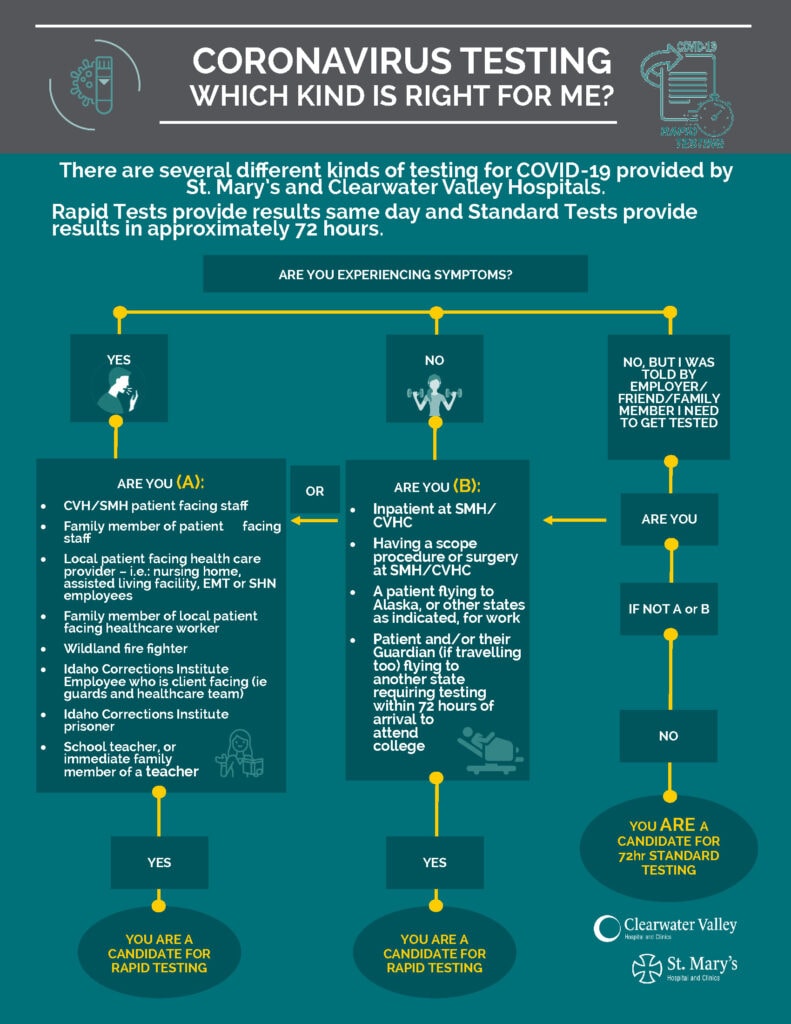 Testing and positive number of cases of COVID-19 have risen in the last several weeks in our community. Some of the terms surrounding COVID-19 may be confusing and we at Clearwater Valley Hospital and Clinics would like to provide some clarification to help everyone stay safe and healthy.
Testing and positive number of cases of COVID-19 have risen in the last several weeks in our community. Some of the terms surrounding COVID-19 may be confusing and we at Clearwater Valley Hospital and Clinics would like to provide some clarification to help everyone stay safe and healthy.
“The CDC provides recommendations for home quarantine vs. isolation,” says, Dr. Ann Lima.
“Quarantine is when you have been exposed to someone with COVID-19 (or any illness) and need to stay away from others, while you wait to see if you were infected. Isolation is when you have been infected with COVID-19 and need to stay away from others.”
If you are sick with COVID-19, you have exposed everyone in your household and they will need to quarantine, while you yourself need to isolate.
“If possible, the sick person needs to isolate at home, stay in a bedroom, use a separate bathroom from all others in the household, and wear a mask at all times when not in the bedroom alone,” explains Lima. “If the sick person needs to be cared for by someone else in the household, then the caregiver should wear personal protective equipment if available – gown, gloves, eye protection and N95 mask – in order to protect the caregiver.”
The exposed people in the household need to quarantine for 14 days AFTER the last exposure to the infected household member, or 14 days AFTER the end of isolation if there is ongoing exposure (in the setting of incomplete isolation or need for caregiving). If at any point anyone else in the household has symptoms, they should get tested and quarantine (which they should already be doing), and then isolate if positive.

Dr. Lima also states that, “If someone in your home has tested positive for COVID-19, you (and everyone else in the household) need to stay home, you cannot go to school or the grocery store or out to coffee or social events or play sports. (See above, this is for at least 14 days and up to 24 days if there is ongoing exposure.) This doesn’t mean you leave your home with a mask, this means you stay at home and don’t leave. Please reach out to friends or family, or the hospital or clinic for resources and if you need someone to help get groceries, prescriptions, or other necessary items. We are here to help you in any way possible.”
“We need to work together to keep our schools open and our community safe! There are lots of good definitions and explanations on https://www.cdc.gov/coronavirus/2019-ncov/if-you-are-sick/quarantine.html,” says Lima. “No matter where you are, please always wash your hands before eating or touching your face. Stay 6 feet away from people who don’t live with you and wear a mask when you are within 6 feet of others.”
Dr. Lima also reminds patients of the importance of keeping up on regularly scheduled health checks, “Know that you should stay up on you regular care, most of which can be done remotely. Most follow up appointments and wellness exams can be done remotely, on the phone or video chat platforms. Staff at CVHC can get you set up for screening to be done when you are able. We also recently held our first drive-up flu vaccine clinic to help patients and staff limit any exposure. We’ll be doing more of these in Orofino and Pierce in the coming weeks.”
